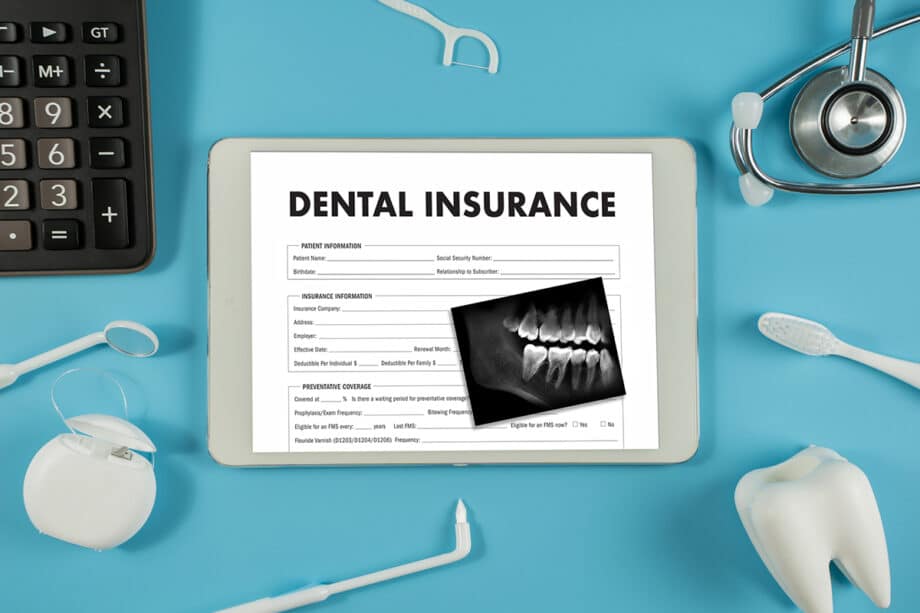As dental professionals, we often hear questions and concerns from our patients about their dental insurance. Navigating the world of deductibles, annual maximums, and coverage tiers can be confusing, and this confusion has given rise to several persistent myths. Many people make decisions about their oral health based on these misconceptions, which can unfortunately lead to delayed treatment, unexpected costs, and compromised dental wellness. We believe that understanding your benefits is a critical part of maintaining a healthy smile.
Our goal is to empower you with clear and accurate information, enabling you to use your dental plan effectively. By separating fact from fiction, you can better partner with your dental team to prioritize your health. We aim to clarify the confusion and help you maximize your benefits while receiving the best possible care. Let's explore and debunk the five most common dental insurance myths we encounter, providing you with the clarity you need to smile confidently.
Myth 1: Dental Insurance Covers Everything
The Reality of Coverage Limits
One of the most common misconceptions we see is the belief that having dental insurance means all procedures are covered at 100%. In reality, dental insurance covers a portion of your dental care costs, not eliminates them. Most plans operate on a 100-80-50 coverage structure. This typically means that preventive care, such as cleanings and exams, is covered at or near 100%, basic procedures, like fillings, are covered at around 80%, and major procedures, like crowns or bridges, are covered at 50%. It's essential to note that cosmetic treatments, such as teeth whitening or veneers, are typically not covered.
Understanding Your Annual Maximum
Furthermore, nearly every dental plan has an annual maximum. This figure is the total dollar amount your insurance provider will pay for your care in a single benefit year. Once you reach this limit, you are responsible for 100% of any additional costs until your plan renews. The average annual maximum has remained between $1,500 and $2,500 for many years. We always recommend reviewing your specific plan details or speaking with our administrative team to understand your coverage, deductibles, and annual maximum before beginning any treatment. This knowledge helps prevent surprises and allows you to plan your care effectively.
Myth 2: If I Have a Healthy Mouth, I Don't Need Dental Insurance
The Value of Preventive Care
Many people with healthy teeth and gums question the need for dental insurance, viewing it as an unnecessary expense. However, this mindset overlooks the primary purpose of dental insurance: promoting preventive care. Regular check-ups and cleanings are essential for maintaining good oral health and detecting potential issues before they become more complex and costly. Most insurance plans cover these preventive visits at a high percentage, often 100%. By making these appointments affordable, insurance encourages you to see your dentist regularly.
An Emergency Safety Net
Insurance also acts as a crucial financial safety net. A sudden toothache, a chipped tooth from an accident, or an unexpected infection can require immediate and sometimes expensive treatment, such as a root canal or a crown. Without insurance, the full cost of these emergency procedures falls on you. Having a dental plan provides peace of mind, ensuring that an unforeseen dental problem doesn't turn into a significant financial burden. Think of it less as a payment for existing problems and more as a tool for prevention and protection against the unexpected.
Myth 3: I Should Only Use In-Network Dentists
The Flexibility of PPO Plans
There's a widespread belief that you must exclusively see a dentist who is "in-network" with your insurance plan. While staying in-network with an HMO (Health Maintenance Organization) plan is often required, PPO (Preferred Provider Organization) plans offer much more flexibility. With a PPO plan, you can visit any dentist you choose, whether they are in-network or out-of-network. The primary difference lies in your out-of-pocket costs. Your insurance will still contribute to the cost of care from an out-of-network provider, but your co-payment might be higher than it would be with an in-network dentist.
Prioritizing Quality of Care
Choosing a dentist is a personal decision that should be based on trust, quality of care, and comfort, not just network status. If you have a long-standing relationship with a trusted out-of-network dentist, the slightly higher cost may be well worth the peace of mind that comes from receiving care from a team you know and respect. We always advise our patients to let us check their benefits. Our team can help you understand what your plan will cover at our practice so you can make an informed choice that prioritizes both your health and your budget.
Myth 4: Dental Insurance Isn’t Worth the Cost
Some people believe that dental insurance is an unnecessary expense, especially if they don’t anticipate needing major dental work. However, this perspective often overlooks the long-term financial benefits of having coverage. Preventive care, such as cleanings, exams, and X-rays, is typically covered at little to no cost, helping you avoid more expensive treatments down the road. For example, catching a small cavity early can prevent the need for a costly root canal or crown later.
Peace of Mind for the Unexpected
Dental emergencies can happen to anyone, regardless of how well you care for your teeth. A cracked tooth, an abscess, or a sudden need for oral surgery can result in significant out-of-pocket expenses without insurance. Having a dental plan ensures you’re prepared for the unexpected, providing financial relief when you need it most. Think of dental insurance as an investment in both your oral health and your financial security.
Myth 5: Dental Insurance and Medical Insurance Work the Same Way
Key Differences Between Dental and Medical Insurance
A common misconception is that dental insurance operates just like medical insurance. While both aim to make healthcare more affordable, they function quite differently. Medical insurance typically focuses on covering catastrophic events and ongoing treatments for chronic conditions, whereas dental insurance emphasizes preventive care and routine dental maintenance. This coverage is why dental plans usually have lower premiums and annual maximums compared to medical plans.
Understanding the Preventive Focus
Dental insurance is designed to encourage regular dental visits, which helps prevent serious issues from developing. Unlike medical insurance, which may have no cap on coverage for major illnesses, dental insurance often has an annual maximum limit. This structure reflects a focus on maintaining oral health through preventive care rather than relying on extensive, long-term treatments. By understanding these differences, you can better utilize your dental benefits and avoid surprises.
Putting Your Health First
Ultimately, dental insurance is a valuable tool designed to make oral health care more accessible and affordable, but it's not a substitute for proactive care. Understanding the realities of your plan—from coverage tiers and annual maximums to network flexibility—empowers you to make informed decisions about your health. We encourage you to view your insurance as a partner in your wellness journey, not a barrier. By focusing on regular preventive care and working with a trusted dental team, you can achieve and maintain a healthy smile for life.
Frequently Asked Questions About Dentistry
How often should I visit the dentist?
We recommend that most patients visit the dentist for a professional cleaning and examination every six months. These regular visits are crucial for removing plaque and tartar that cannot be eliminated with brushing and flossing alone. They also enable us to screen for early signs of cavities, gum disease, and other oral health issues when they are most easily treated. For some patients, especially those with a history of gum disease, we may recommend more frequent visits.
Is it bad if my gums bleed when I floss?
Occasional, minor bleeding when you first start a flossing routine can be normal, but persistent bleeding is not. Gums that bleed regularly when you floss or brush are often an early sign of gingivitis, the first stage of gum disease. Plaque buildup along the gumline is a significant contributing factor.. If you notice consistent bleeding, it’s a signal to be more diligent with your oral hygiene and to schedule a check-up. We can assess the health of your gums and recommend the best course of action.
At Smile Shack, we provide exceptional dental care to families and individuals in our community. Our experienced team uses modern technology to ensure every visit is comfortable and practical. If you have questions about your dental health or insurance benefits, please don’t hesitate to contact us to schedule an appointment.


